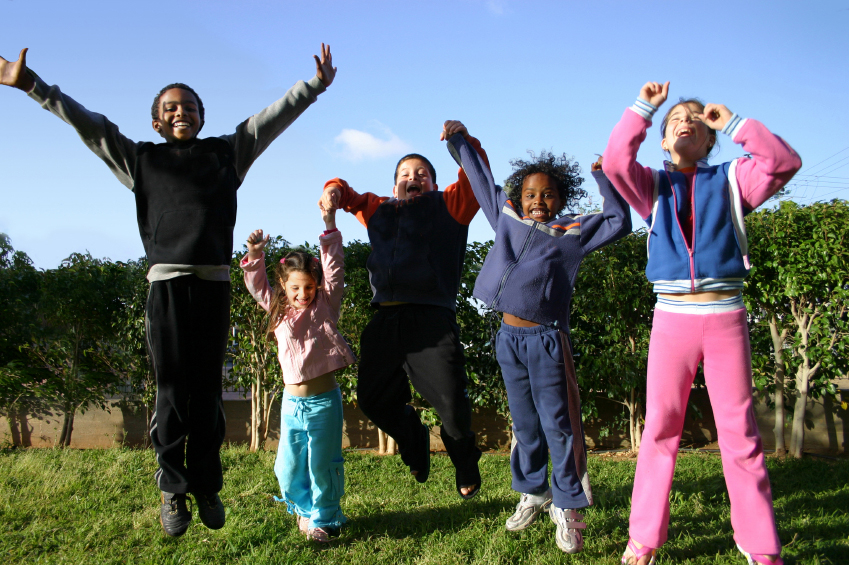The Social Nervous System is something that we all know about intuitively, to a greater or lesser degree. When someone makes eye contact with you and gives you a warm smile, both of your Social Nervous Systems are being engaged. You might feel pleasant sensations in your face and your body, and a whole-body experience of expanding and relaxing. You smile back, the pleasant sensations and expansion increase, and you notice that the other person is mirroring your own relaxation and joy.
Here’s another example. Maybe you’re having a challenging day, and a colleague at work says, “Boy, it’s really hard sometimes, isn’t it?” Her voice is soft and sympathetic, and you feel acknowledged and met in a way that speaks to the way you are feeling. Then you notice you can take a deeper breath, and feel a bit more space. There is a sense of relief, as if the tension you were holding relaxes a bit.
Or, one of your kids is upset because someone at school said something unkind and untrue about them. Without saying anything, you just walk over and put a hand on their shoulder or their back. They keep telling their story and you just listen. Slowly, you feel them relaxing and slowing down.
People have been using their Social Nervous Systems for as long as people have been on the planet. But it has only been in the last 10-15 years that science has identified the importance of a certain group of nerves hat help us feel acknowledged, loved, contacted, met, bonded, secure.
These nerves are among a nerve set called the Cranial Nerves. They are nerves than innervate the eyes, ears, nose, mouth, face and hands. With these nerves we see, hear, smell, taste and touch. They give us very important information about the world around us, especially our social world, our contact with other people. All of the Cranial Nerves play roles in the Social NS, but the primary nerves of the Social NS are the Vagus, Trigeminal, Facial and Glossopharyngeal nerves.
Some researchers, such as Dr. Stephen Porges, have realized that this special nerve network serves a critical function for us. It helps us regulate our autonomic (or automatic) nervous system, and it especially helps that nervous system to discharge any sense of threat, danger or stress that we feel. In fact, this Social Nervous System is probably our most elegant and efficient means of relieving stress.
This nervous system is a critical part of our very first experiences in life, at birth and in the days and weeks after birth. If newborns have a fairly stress-free birth, they will be able to use their Social Nervous Systems to appear radiant and attractive to their parents. The parents in turn will be powerfully attracted to the little ones, and will fall in love and bond with them. Biologically, this ensures that the little ones will have secure attachment that will help them be nurtured and protected through their early years, when they are very vulnerable. This sort of secure attachment is the best beginning that a little one can have.
Research has shown that newborns who become securely attached feel welcomed and comfortable in the world. They go through their developmental steps in a much easier and progressive way than the little ones who do not succeed in getting secure attachment. Secure attachment enables them to trust and rely on their own Social Nervous Systems throughout their lives as their primary way to cope with stress and life challenges.
Another important aspect of the Social NS is its relationship to our hearts. Our hearts have long been seen to be the organs which pump blood throughout our bodies. Now we know that our hearts are really not capable of moving blood through the miles of arteries and veins in our bodies. The heart does have a moderate pumping action, only enough to get blood started in its circulatory routing. The motility of the body’s energy system is what facilitates the full movement of blood through its system.
But what our hearts really do is perhaps even more extraordinary than the blood-pumping function. The heart has the largest energy field of any part of our body, a field that extends up to 30 feet out in front of our bodies. With its huge field, the heart acts as the primary modulator of incoming and outgoing energy for the body. In this way, our physical hearts reflect the expressions of our emotional hearts—giving out and taking in essential aspects of Social NS interactivity, such as love, warmth, caring, nurturing, etc.
Our hearts have yet another critical Social NS function. The ventral Vagus nerve network richly innervates the Sinoatrial (SA) node of the heart, along with other parasympathetic nerve fibers. The sympathetic nervous system also has innervation to the Sinoatrial node, which is the heart’s pacemaker. The sympathetic NS can exert a speeding-up influence on the whole body, and the SA node responds by increasing the heart’s rate. If the sympathetic NS is chronically over-active, it can have a negative effect on the heart by causing the SA node to over-function and keep the heart rate abnormally high.
However, the ventral Vagus nerve network, if and when it is optimally functioning, can exert an inhibiting effect on the sympathetic NS, right at the Sinoatrial node. This has the effect of telling the sympathetic NS (and the heart), “everything is OK. We can deal with this situation through relationship rather than through fight / flight.” This modulating ability of the Social NS is critical for us to be able to thrive rather than being caught in the constant distress of survival.
Your Social NS becomes more effective with practice! So, notice what happens when you shift gears a little bit and start meeting people with a smile and a welcoming voice. With the Social NS, what goes around, comes around !!



